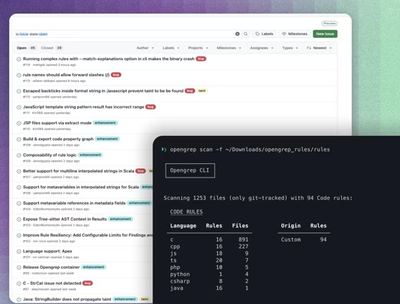concurrency-logger





HTTP logging middleware especially useful to unwind concurrent operations without losing the request context

Launch demo in your browser
Install
$ npm install concurrency-logger
Usage
Basic usage
import Koa from 'koa';
import createLogger from 'concurrency-logger';
const app = new Koa;
const logger = createLogger();
app.use(logger);
Log from middleware
app.use(async (context, next) => {
context.log('Log!');
context.log.info('Info!');
context.log.error('Error!');
await next();
});
Attach more context to the log
const logger = createLogger({
req: context => (
context.originalUrl + '\n' +
context.get('User-Agent')
)
});
Include localized timestamps
const logger = createLogger({
timestamp: true
});
Write log to file
import { createWriteStream } from 'fs';
const log = createWriteStream('logs/requests.log');
const logger = createLogger({
reporter: log
});
Adjust alert levels per method and response time
const logger = createLogger({
getLevel: (responseTime, context) => {
let threshold = 50;
if (['POST', 'PUT'].includes(context.method)) {
threshold *= 1.5;
}
return Math.floor(responseTime / threshold) - 1;
}
});
Standalone
import createLogger from 'concurrency-logger';
const logger = createLogger();
(async () => {
const context = {
method: 'GET',
originalUrl: '/'
};
const next = async () => {
await new Promise(resolve => setTimeout(resolve, 100));
context.status = 200;
};
try {
await logger(context, next);
} catch (error) {
}
})();
API
| Option | Type | Default | Description | Example |
|---|
| minSlots | integer | 1 | Amount of space that is provisioned to display concurrent request lanes. Number of lanes will automatically scale up as the number of concurrent requests grow. | 3 |
| getLevel | integer: function(responseTime: integer) | responseTime => Math.floor(responseTime / 50) - 1 | Map response time to alert level. Alert levels go from 0 (default color) to 6 (dark red). By default that means <100ms: 0, <150ms: 1 <200ms: 2, ..., >=350ms: 6. | responseTime => Math.floor(responseTime / 100) |
| width | integer, boolean(false) | undefined | If no width is provided, it will be dynamically read from process.stdout.columns. Pass in an integer to break all lines according to the specified fixed (terminal character) width. Pass in false if you want the lines not to break at all. | 80, 132, false |
| timestamp | boolean | false | Print localized timestamp for every requests. | true, false |
| slim | boolean | false | "Slim mode": don't use an extra character between request lanes to shrink width, but make them harder to separate visually. | true, false |
| reporter | writable stream | process.stdout | Specify a stream that handles the output lines. Write to terminal or stream to a log file, for example. Note that the lines contain ANSI color codes, so when streaming to a file you might need a program that can read those. E.g. less -r requests.log | require('fs').createWriteStream('logs/requests.log') |
| req | any: function(context: object) | context => context.originalUrl | Attach additional information to the request log line. | context => context.originalUrl + '\n' + context.get('User-Agent') |
| res | any: function(context: object) | context => context.originalUrl | Attach additional information to the response log line. | context => context.originalUrl + '\n' + context.get('User-Agent') |
Developing
Install development dependencies
$ npm install
Create new fixtures to test against
$ npm run create-fixtures
Manually review fixtures (you need a program that renders ANSI escape codes)
$ less -r test/fixtures/*
Run tests
$ npm test
Run code linter
$ npm run lint
Compile to ES5 from /src to /lib
$ npm run compile
Initialize demo project
$ git clone git@github.com:PabloSichert/concurrency-logger demo
$ cd demo
demo $ git checkout gh-pages
demo $ npm install
Build demo
demo $ npm run compile




